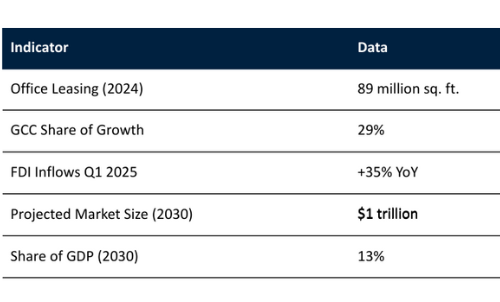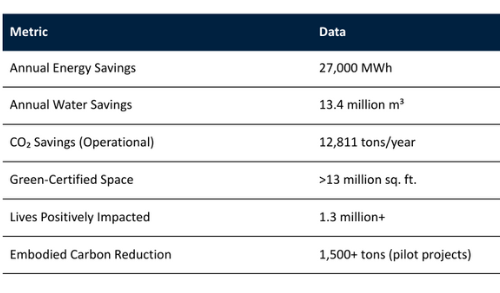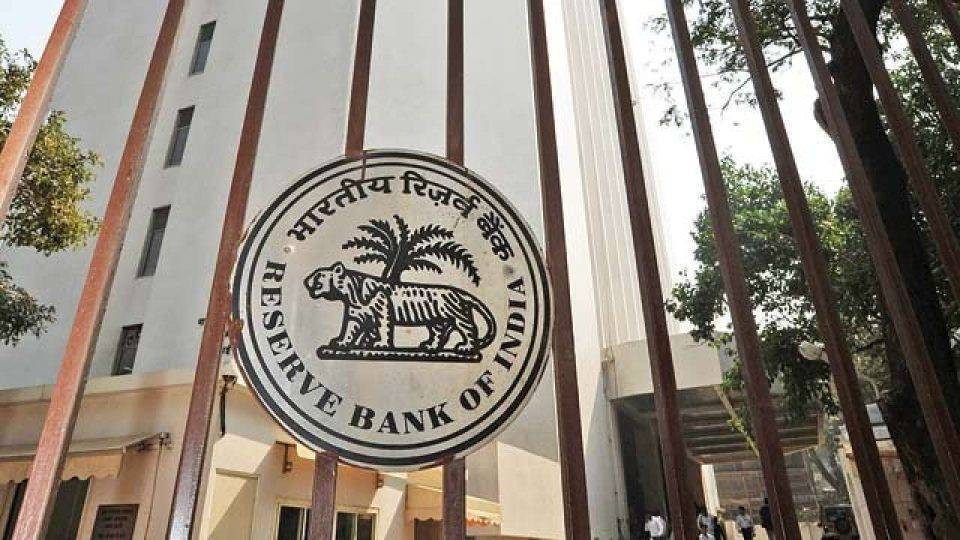Sundaram Alternates (SA), the alternatives platform of the Sundaram Finance Group, has released a new white paper, “Bridging the Gap: The Essential Role of Climate-First, ESG-Integrated Private Credit in India’s Real Estate Growth.” The paper highlights how India’s real estate sector, projected to reach $1 trillion by 2030 and contribute 13% to GDP , cannot achieve sustainable growth without a climate-first approach to financing.
The Whitepaper highlights
• India’s real estate sector to touch $1 trillion by 2030, contributing 13% to GDP
• 89 mn sq. ft. of office leasing in 2024; 35% FDI surge in Q1 2025
• Mid-stage construction funding gap presents a $15–20 billion private credit opportunity with 15–20% risk-adjusted returns
• ESG-integrated private credit can reduce 12,800 tons of CO₂ annually and impact 1.3 million+ lives
• Demonstrated outcomes: 27,000 MWh energy savings and 13.4 million m³ water savings per year
• India’s green taxonomy and SEBI’s BRSR norms will enable the country to leapfrog global peers in sustainable real estate finance
Closing a Critical Funding Gap
India’s property market is experiencing unprecedented momentum, with 89 million sq. ft. of office leasing in 2024 and a 35% YoY surge in FDI inflows in Q1 2025. Yet, mid-stage construction financing remains underserved as banks and NBFCs pull back.
The white paper identifies this “sweet spot” for climate-first, ESG-integrated private credit, which can both bridge the funding gap and deliver 15–20% risk-adjusted returns for investors.

Despite strong momentum, mid-stage construction financing remains underserved as banks and NBFCs pull back. This ‘missing middle’ is where private credit can step in.
Key Takeaway: Mid-stage financing (Stage 2) is the sweet spot for private credit—high demand, underserved supply, and resilient risk-return profile.
Climate & ESG: From Concept to Measurable Outcomes
The paper firmly establishes that ESG is no longer optional, especially since the real estate sector accounts for nearly 40% of global energy-related CO₂ emissions. With nearly 70% of the infrastructure needed for 2070 yet to be built, the paper argues that embedding ESG from the outset is both an opportunity and a necessity. It positions ESG-integrated private credit as a unique solution that can deliver financial returns while creating measurable environmental and social impact.

Key Takeaway: Climate-integrated ESG practices are no longer optional. Climate-first integration is essential for India’s real estate to remain globally competitive and domestically sustainable.
The paper demonstrates how a climate-first approach, enabled by ESG discipline, has already delivered measurable outcomes through past initiatives:
• 27,000 MWh of annual energy savings
• 13.4 million m³ of water savings annually
• 12,811 tons of operational CO₂ emissions reduced per year
• >13 million sq. ft. of green-certified building space developed
• Positive impact on 1.3 million+ lives
Global Context, India’s Opportunity
Globally, ESG-integrated private credit has become mainstream, with the US SEC, Europe’s SFDR, Japan’s GPIF, and Singapore’s Green Finance Action Plan driving over $1 trillion in sustainable capital flows. The paper argues that with India’s upcoming green taxonomy and SEBI’s BRSR norms, the country is poised to leapfrog global peers and become a leader in climate-first financing.
Commenting on the findings, Mr. Karthik Athreya, Managing Director at Sundaram Alternates, said, “India’s real estate story is no longer just about scale — it’s about sustainability. Our white paper demonstrates that climate-first private credit is the missing link between investor capital and India’s $1 trillion real estate growth. This is not theory; it is a practical roadmap that shows how disciplined risk management and measurable climate outcomes can go hand-in-hand. Sundaram Alternates is proud to lead this industry-first conversation.”
The Way Forward
India’s $1 trillion real estate growth story represents a once-in-a-generation opportunity. But growth without sustainability is no longer viable. A Climate-First, ESG-integrated private credit framework ensures that financing flows deliver not just returns, but resilience and responsibility. This is not theory—it is a roadmap. With proven impact metrics, global precedents, and investor appetite, India can define the next decade of real estate finance by aligning capital with climate outcomes. Key Takeaway: India can set a global benchmark by making climate-first private credit the new industry standard—fueling both growth and sustainability.
The white paper stresses that climate-first investing must be anchored in disciplined risk management. Proven practices such as amortising payout structures, multiple security packages, and strong promoter alignment ensure investor capital remains protected even as funds push for measurable climate impact.









.png)